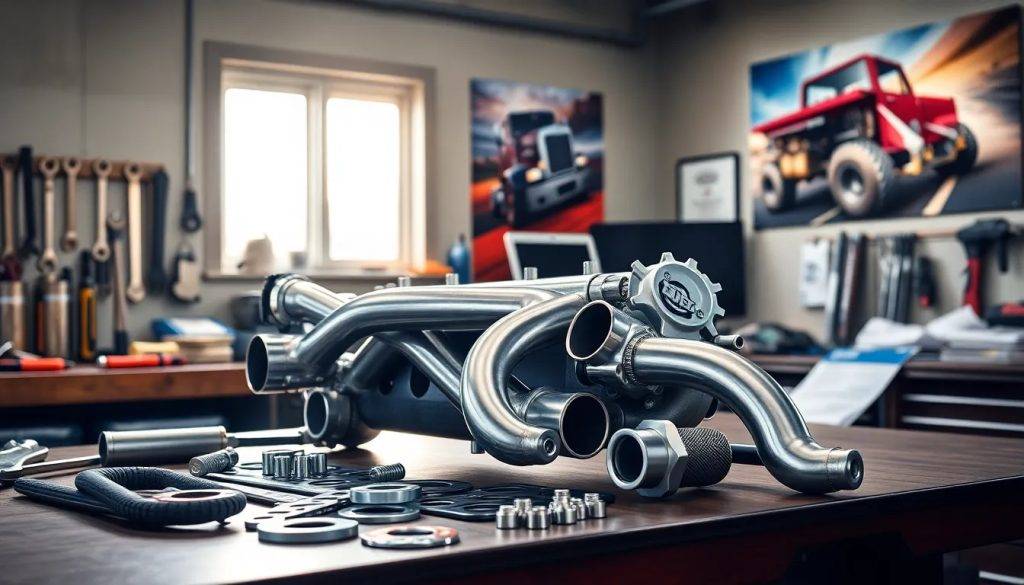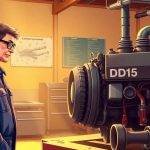Dd13 egr cooler delete kit guide

The DD13 EGR cooler delete kit is increasingly popular among Detroit Diesel engine enthusiasts. By removing the EGR system, users often experience improved engine performance and fuel efficiency. This article provides an in-depth look into the kit, its installation, benefits, and the legal implications of EGR deletion.
- What is the DD13 EGR cooler delete kit?
- How does the EGR cooler delete process work?
- What are the benefits of using a DD13 EGR cooler delete kit?
- What tools are needed for the DD13 EGR cooler delete?
- Are there any legal considerations for EGR deletion?
- How can I optimize my Detroit Diesel engine after EGR delete?
- Related questions about the DD13 EGR cooler delete kit
What is the DD13 EGR cooler delete kit?
The DD13 EGR cooler delete kit is specifically designed for Detroit Diesel engines, allowing users to remove the Exhaust Gas Recirculation (EGR) system. This system is responsible for reducing nitrogen oxide emissions by recirculating a portion of the exhaust back into the engine.
By installing this kit, users can prevent the recirculation of exhaust gases, leading to a cleaner combustion process. This modification is often sought by those looking to enhance engine performance, fuel economy, and overall reliability.
Moreover, the kit typically includes necessary hardware such as blocking plates and gaskets, making the installation process smoother. Users should ensure they purchase a high-quality kit for optimal performance and compatibility.
How does the EGR cooler delete process work?
The process of deleting the EGR cooler involves several steps. First, the engine's computer, or ECM, must be reprogrammed to accommodate the deletion. This step is crucial to ensure the engine runs efficiently without the EGR system.
Following the ECM tuning, the physical installation of the blocking plates is required. These plates prevent exhaust gases from re-entering the engine, effectively bypassing the EGR system.
Additionally, it's vital to properly seal all connections to avoid leaks. An improper installation may lead to performance issues or engine damage.
In summary, the EGR cooler delete process consists of:
- ECM reprogramming
- Removing the EGR cooler
- Installing blocking plates
- Sealing connections
What are the benefits of using a DD13 EGR cooler delete kit?
Using a DD13 EGR cooler delete kit offers numerous advantages for Detroit Diesel engine users. One of the most significant benefits is the increased power output. Removing the EGR system allows for more efficient combustion, resulting in enhanced horsepower and torque.
Another key benefit is improved fuel efficiency. Without the EGR system, the engine can operate at optimal levels, leading to better miles per gallon (MPG) performance. This can translate to significant cost savings over time, especially for long-haul operators.
Moreover, the deletion can lead to reduced maintenance costs. EGR systems are known to produce soot and other contaminants that can clog filters and other components. By eliminating the EGR system, users can minimize the frequency of maintenance procedures.
What tools are needed for the DD13 EGR cooler delete?
To successfully install the DD13 EGR cooler delete kit, certain tools are essential. Having the right tools will ensure a smooth installation process:
- Socket set
- Torque wrench
- Screwdrivers
- Gasket scraper
- ECM tuning software
In addition to the basic tools, it's often helpful to have a work light for visibility and a cleaning solution to prepare surfaces before installation. Proper preparation is key to achieving a successful and lasting modification.
Are there any legal considerations for EGR deletion?
When considering the DD13 EGR cooler delete kit, understanding the legal implications is crucial. In many jurisdictions, modifying or deleting emissions systems can violate environmental regulations.
It's essential to check local laws regarding emissions controls before proceeding with an EGR delete. Failure to comply with regulations can result in fines, vehicle impoundment, or increased scrutiny during vehicle inspections.
Moreover, some regions may require vehicles to pass emissions tests. If the EGR system has been removed, the vehicle may not meet compliance standards, leading to challenges when registering the vehicle or renewing vehicle licenses.
To avoid legal issues, operators should consult with a professional or conduct thorough research regarding EGR deletion laws in their area.
How can I optimize my Detroit Diesel engine after EGR delete?
After installing the DD13 EGR cooler delete kit, there are several steps to further optimize your engine's performance. First and foremost, ensure that the ECM has been properly tuned. This step is crucial for maximizing the benefits of the deletion.
Next, consider implementing a DPF removal or SOC deletion if applicable to your engine configuration. However, remember to verify the legal status of such modifications in your area.
Additionally, regular maintenance practices should be followed to keep the engine in top shape. This includes oil changes, fuel system cleaning, and inspecting all components for wear.
Lastly, periodic performance evaluations can help in identifying any areas for further tuning or enhancement. Engaging with communities or forums that focus on Detroit Diesel engines can provide valuable insights and recommendations.
What happens if you remove an EGR cooler?
Removing an EGR cooler will lead to a more efficient combustion process. However, without the cooler, there may be an increase in nitrogen oxide emissions. It’s essential to have a proper ECM tune to accommodate this change, ensuring that the engine runs smoothly without the EGR system.
How much does it cost to delete a DD13?
The cost of deleting a DD13 can vary significantly based on various factors such as the kit used and professional labor fees. Typically, parts can range from $300 to $1,000, while labor costs may add an additional $200 to $500. In total, you might expect to spend anywhere from $500 to $1,500 for a complete EGR delete.
What happens if I delete EGR without deleting DPF?
If you remove the EGR system without addressing the DPF, the engine might face back pressure issues, leading to performance problems. It’s crucial to ensure both systems are modified in accordance with local regulations to maintain vehicle efficiency and compliance.
What are the downsides of EGR delete?
While there are several benefits to an EGR delete, potential downsides include legal ramifications due to emissions regulations. Additionally, removing the EGR can lead to increased engine temperatures and, if not properly tuned, could result in engine damage over time. Users should weigh the benefits against these risks before proceeding.
 Will a truck with DPF removed pass inspection?
Will a truck with DPF removed pass inspection? Dd15 dpf delete problems explained
Dd15 dpf delete problems explained DD15 overhaul cost analysis: what you need to know
DD15 overhaul cost analysis: what you need to know Dd15 smoking after dpf delete: causas y soluciones
Dd15 smoking after dpf delete: causas y solucionesIf you want to know other articles similar to Dd13 egr cooler delete kit guide you can visit the category DETROIT.
Leave a Reply

RELATED POSTS